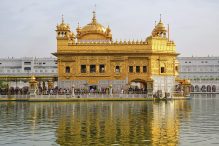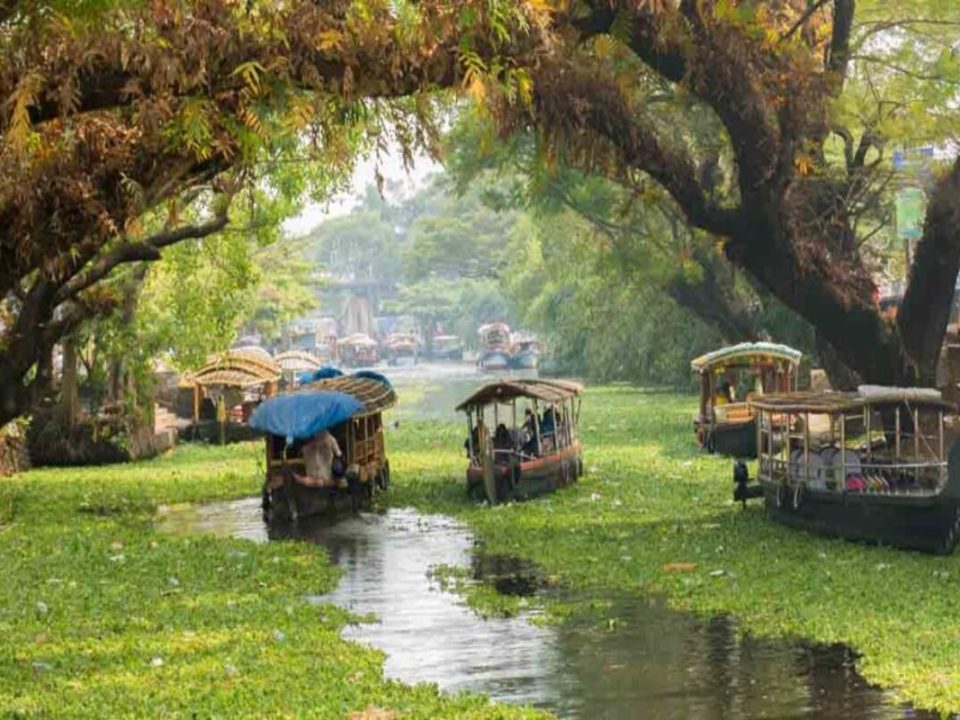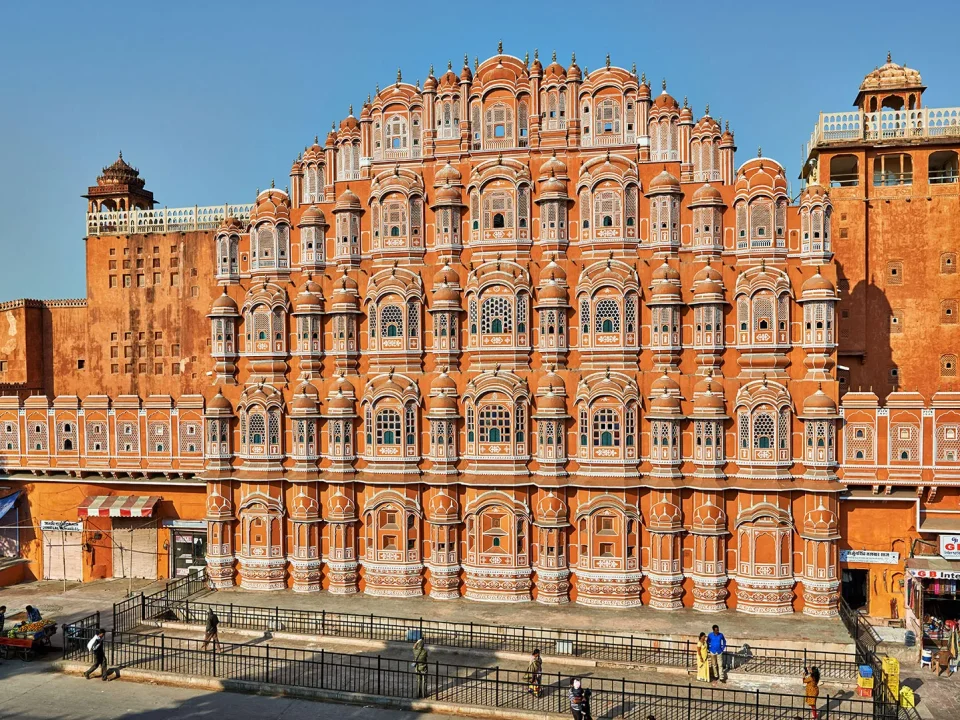The Golden Temple, Amritsar: A Spiritual and Architectural Marvel
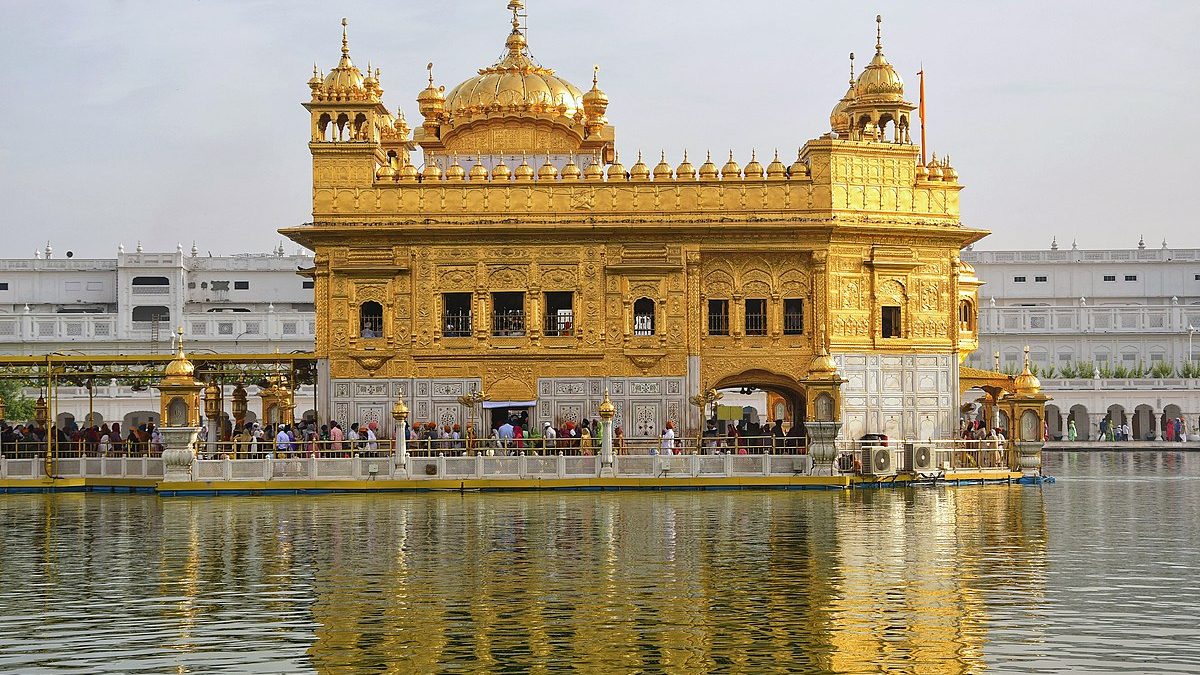
The Golden Temple, Amritsar: A Spiritual and Architectural Marvel
The Golden Temple, also known as Harmandir Sahib or Darbar Sahib, is the most sacred pilgrimage site for Sikhs and one of India’s most visited tourist destinations. Located in Amritsar, Punjab, the Golden Temple is renowned for its stunning architecture, spiritual significance, and the serene Amrit Sarovar (Pool of Nectar) that surrounds it. This comprehensive guide provides tourists with detailed information about the Golden Temple, including its history, architectural features, cultural significance, and practical tips for visiting.
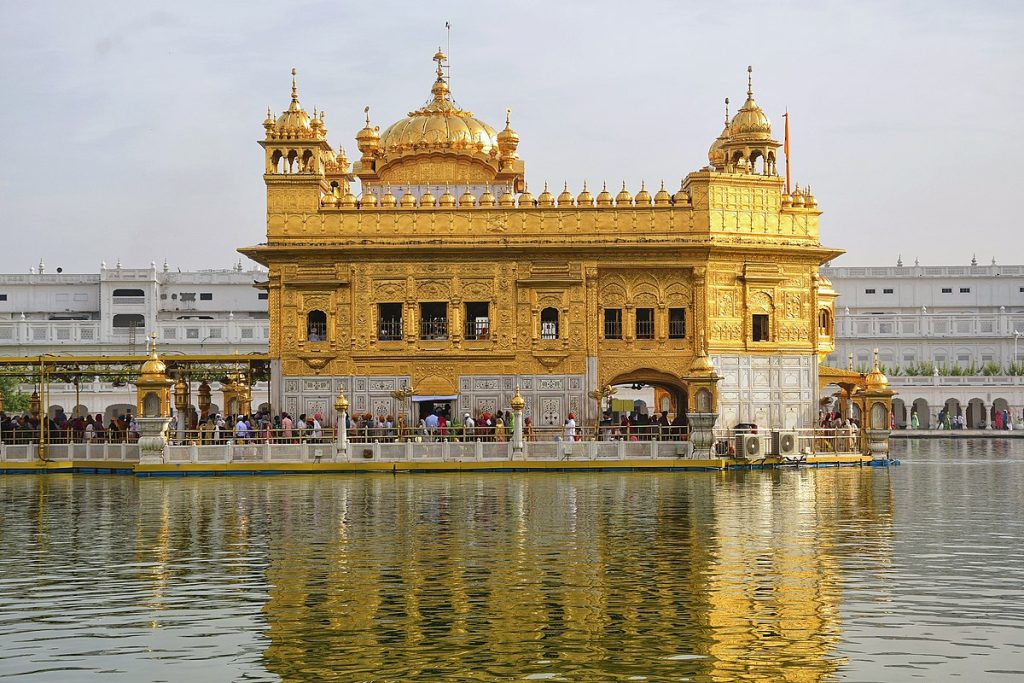
Historical Background
Founding of Amritsar and Construction: The city of Amritsar was founded in 1577 by Guru Ram Das, the fourth Sikh Guru. He also initiated the construction of the Amrit Sarovar, a sacred pool around which the Golden Temple would later be built. The fifth Guru, Guru Arjan Dev, oversaw the construction of the Golden Temple, which was completed in 1604. He also compiled the Adi Granth, the holy scripture of Sikhism, and installed it in the temple.
Historical Events: The Golden Temple has witnessed numerous historical events, including attacks and reconstructions. In the mid-18th century, the temple was destroyed by Afghan invaders and subsequently rebuilt by Maharaja Ranjit Singh in the early 19th century, who covered the upper floors with gold leaf, giving the temple its iconic appearance. The temple has also been a focal point for Sikh political and religious movements throughout history.
Modern Developments: In the 20th century, the Golden Temple complex underwent significant renovations and expansions to accommodate the growing number of pilgrims and visitors. Today, it stands as a symbol of Sikh faith, resilience, and hospitality.
Architectural Features
Main Temple (Harmandir Sahib): The main temple, Harmandir Sahib, is a two-story marble structure with an upper floor covered in gold leaf. It is built on a square platform in the center of the Amrit Sarovar and is connected to the surrounding complex by a causeway.
- Exterior Design: The temple’s exterior is adorned with intricate marble inlays, frescoes, and gilded panels. The golden dome, shaped like an inverted lotus flower, symbolizes the Sikh aspiration to live a pure and honest life.
- Interior Design: The interior of the temple is equally opulent, with ornate decorations, chandeliers, and gold-plated walls. The sanctum sanctorum houses the Guru Granth Sahib, the central religious scripture of Sikhism, which is read continuously during the day.
Amrit Sarovar: The sacred pool surrounding the Golden Temple is known as the Amrit Sarovar, or Pool of Nectar. Pilgrims bathe in the pool’s holy waters, which are believed to have healing properties. The reflection of the Golden Temple in the tranquil waters of the Amrit Sarovar adds to the site’s spiritual ambiance.
Parikrama (Circumambulation Path): The path around the Amrit Sarovar, known as the Parikrama, is paved with white marble and features several shrines, memorials, and historical markers. Pilgrims walk along this path as an act of devotion and reverence.
Akal Takht: Situated within the Golden Temple complex is the Akal Takht, or the Throne of the Timeless One. It is one of the five Takhts (seats of authority) in Sikhism and serves as the highest seat of earthly authority for the Khalsa (the collective body of initiated Sikhs). The Akal Takht was established by Guru Hargobind in 1606 as a place of justice and spiritual guidance.
Clock Tower: The entrance to the Golden Temple complex features a grand clock tower, which was constructed during the British colonial period. The clock tower serves as a prominent landmark and gateway for visitors entering the temple.
Langar Hall: One of the most remarkable aspects of the Golden Temple is its langar, or community kitchen, which serves free meals to all visitors regardless of caste, creed, or religion. The langar hall can accommodate thousands of people at a time and operates around the clock, embodying the Sikh principles of equality and selfless service.
Baba Atal Tower: Located near the Golden Temple, the Baba Atal Tower is a nine-story structure built in honor of Baba Atal Rai, the son of Guru Hargobind. The tower offers panoramic views of the temple complex and the city of Amritsar.

Cultural and Spiritual Significance
Sikhism’s Holiest Site: The Golden Temple is the most sacred site in Sikhism, drawing millions of pilgrims from around the world. It serves as the spiritual center for Sikhs, where they come to connect with their faith, seek guidance, and find solace.
Symbol of Equality and Humility: The Golden Temple is designed with four entrances, symbolizing openness and acceptance. It welcomes people of all backgrounds, reflecting the Sikh belief in equality and the brotherhood of humanity. The practice of serving free meals in the langar hall further emphasizes these values.
Daily Rituals and Ceremonies: The daily rituals at the Golden Temple include the continuous recitation of the Guru Granth Sahib, prayers, and kirtan (devotional singing). The Palki Sahib ceremony, where the Guru Granth Sahib is carried in a palanquin from the main sanctum to the Akal Takht for the night and back in the morning, is a highlight for visitors.
Festivals and Celebrations: The Golden Temple hosts several important Sikh festivals and celebrations, including:
- Vaisakhi: Celebrated in April, Vaisakhi marks the Sikh New Year and the founding of the Khalsa in 1699. The Golden Temple is illuminated, and special prayers and processions are held.
- Gurpurabs: These are the birth and death anniversaries of the Sikh Gurus, especially Guru Nanak Dev Ji and Guru Gobind Singh Ji. The temple is beautifully decorated, and devotees gather for prayers and kirtan.
- Diwali: The festival of lights is celebrated with great fervor at the Golden Temple. The complex is adorned with thousands of lights, and a spectacular fireworks display lights up the night sky.
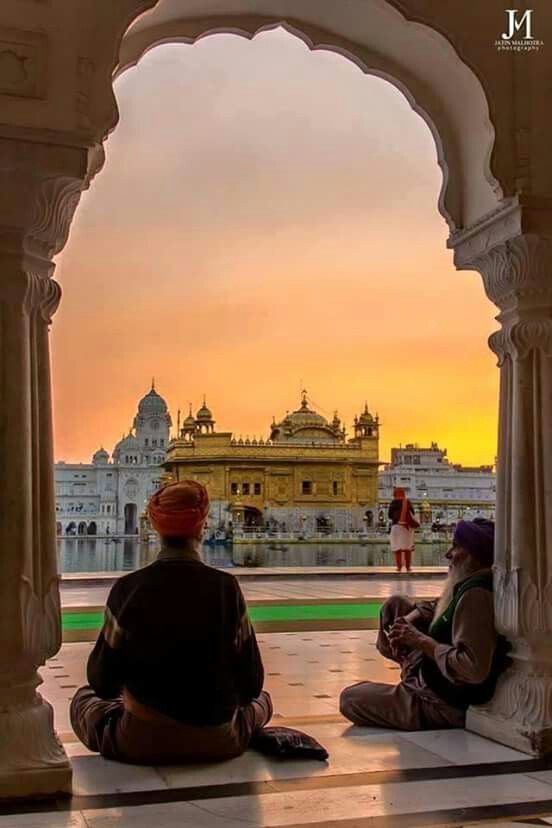
Practical Tips for Visiting the Golden Temple
Best Time to Visit: The Golden Temple is open year-round, but the best times to visit are during the cooler months from October to March. Early mornings and late evenings are ideal for a more serene experience and to witness the temple’s beauty during sunrise and sunset.
Getting There: Amritsar is well-connected by air, rail, and road. The Sri Guru Ram Dass Jee International Airport in Amritsar has flights to major cities in India and abroad. Amritsar Junction railway station is a major rail hub with connections to cities like Delhi, Mumbai, and Kolkata. Buses and taxis are also available for road travel.
Entry and Conduct: Entry to the Golden Temple is free for all visitors. To maintain the sanctity of the site, visitors are required to follow certain guidelines:
- Dress Code: Modest clothing is required. Visitors must cover their heads with a scarf or bandana (available at the entrance). Shoes must be removed before entering the complex.
- Cleanliness: Washing hands and feet at the entrance is customary. The temple complex is kept exceptionally clean, and visitors are expected to respect this by not littering.
- Behavior: Maintain a quiet and respectful demeanor. Photography is allowed in certain areas but avoid using flash or taking photos during prayer times.
Guided Tours: Guided tours are available to provide a deeper understanding of the Golden Temple’s history, architecture, and spiritual significance. Audio guides are also available for those who prefer a self-guided experience.
Accommodation: The Golden Temple complex offers free accommodation for pilgrims and visitors in the Guru Ram Das Niwas and other guesthouses. These facilities provide basic amenities and operate on a first-come, first-served basis. There are also numerous hotels and lodges in Amritsar catering to different budgets.
Food and Dining: The langar hall serves simple yet delicious vegetarian meals to all visitors. Partaking in a meal at the langar is a unique and humbling experience. There are also several restaurants and food stalls in Amritsar offering Punjabi cuisine, including the famous Amritsari kulcha and lassi.
Nearby Attractions: While visiting the Golden Temple, take the opportunity to explore other attractions in Amritsar:
- Jallianwala Bagh: A historic garden and memorial site commemorating the tragic massacre of peaceful protesters by British troops in 1919. It is located a short walk from the Golden Temple.
- Partition Museum: This museum provides insights into the partition of India in 1947, with exhibits and personal stories that highlight the impact on people’s lives.
- Wagah Border: The ceremonial closing of the border gates between India and Pakistan, known as the Wagah Border ceremony, is a popular tourist attraction located about 30 kilometers from Amritsar.
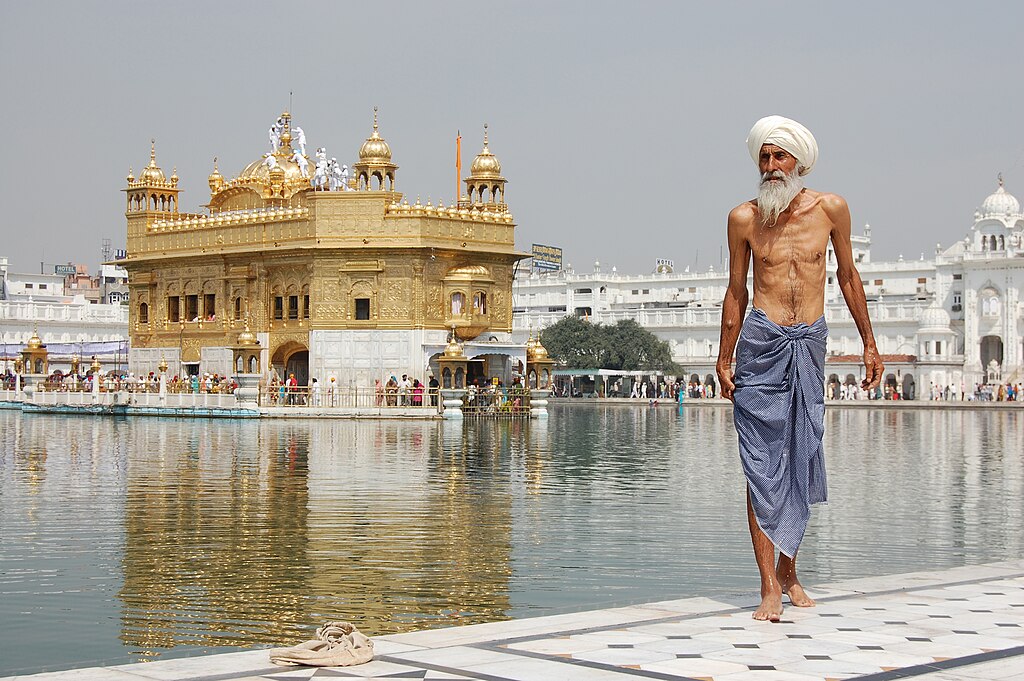
Unique Features and Emotional Impact
Architectural Grandeur: The Golden Temple’s stunning architecture, with its gold-covered exterior and intricate marble work, leaves a lasting impression on visitors. The blend of Indo-Islamic and Sikh architectural styles reflects the rich cultural heritage of the region.
Serene Atmosphere: Despite the large number of visitors, the Golden Temple maintains a serene and peaceful atmosphere. The reflection of the temple in the Amrit Sarovar, the soothing sounds of kirtan, and the fragrance of incense create a spiritually uplifting environment.
Sense of Community: The sense of community and selfless service embodied in the langar and other activities at the Golden Temple is deeply moving. Visitors often leave with a profound sense of humility and
gratitude, inspired by the principles of equality and generosity.
Spiritual Resonance: The spiritual resonance of the Golden Temple is palpable, making it a place of solace and reflection for people of all faiths. The continuous recitation of the Guru Granth Sahib and the communal prayers foster a deep connection with the divine.
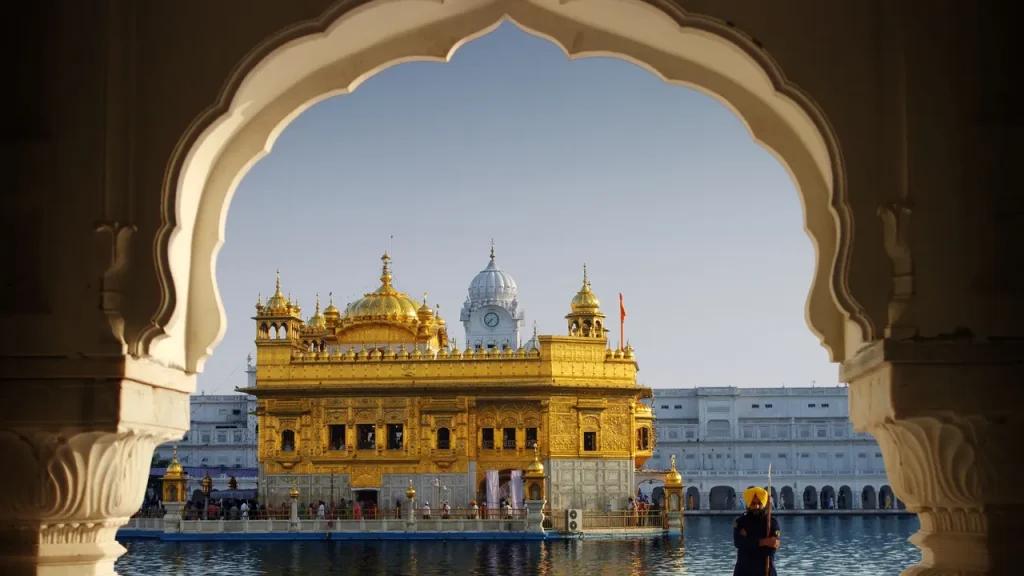
Conclusion
The Golden Temple, with its timeless beauty and profound spiritual significance, is truly one of the world’s most extraordinary places of worship. From its magnificent architecture and tranquil surroundings to its rich history and vibrant community life, the Golden Temple offers a unique and enriching experience for visitors.
As a must-visit destination, the Golden Temple invites travelers to immerse themselves in the serenity and spirituality of this sacred site. Whether exploring the intricate details of the temple, participating in the communal meal at the langar, or simply reflecting by the Amrit Sarovar, visitors are sure to leave with lasting memories and a deeper appreciation of Sikh culture and values.
Plan your visit to the Golden Temple, embrace its unique features and spiritual resonance, and discover why it remains one of the most beloved and iconic destinations in the world. From its architectural splendor and serene atmosphere to its powerful message of equality and service, the Golden Temple offers a magical journey into the heart of India’s spiritual and cultural heritage.
تحصیل در ایتالیا تحصیل رایگان در ایتالیا پذیرش تحصیلی در ایتالیا دانشگاه های ایتالیا بورسیه تحصیلی ایتالیا Aypa Digital Marketing Forex Calculator
thecoins24 Bitcoin News Cryptocurrency airdrop theforex24 Forex News Aypa Group Aypa Website developer Aypa SEO
italyeducation

